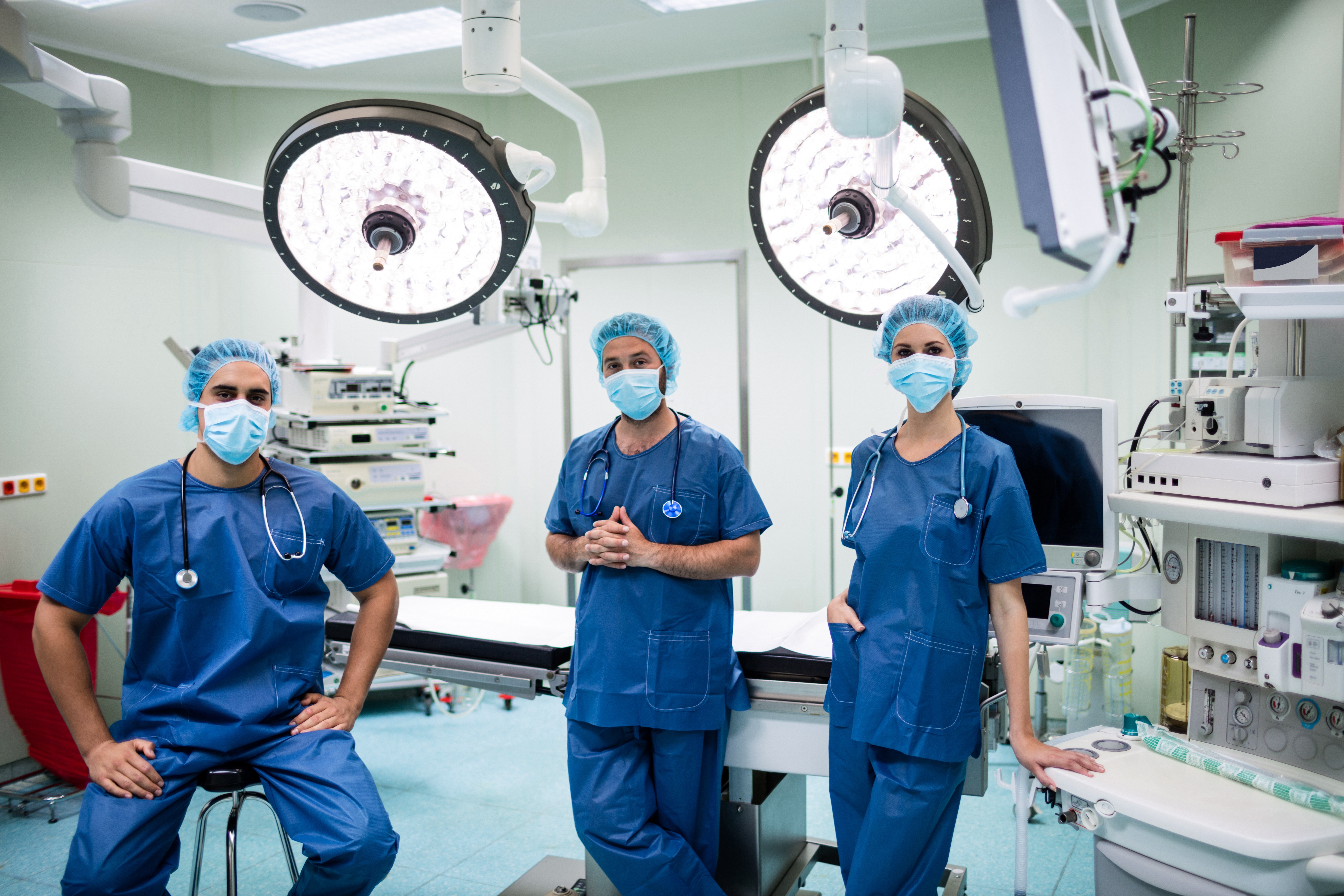
The Society for Ambulatory Anesthesia (SAMBA) strives to be the leader in perioperative—i.e., before and after surgery—of the ambulatory surgical patient.1 Ambulatory anesthesia is used for ambulatory surgery, which is a surgical procedure where the patient does not need to stay overnight in a hospital (outpatient, office-based and non-operating room procedures), and it includes general, regional, local and sedation anesthetics.2 Tens of millions of ambulatory surgery procedures, including endoscopy and cataract surgery, are performed per year,3 and the number and variety of procedures are rapidly growing.2 Because of the rising popularity of ambulatory surgery, ambulatory anesthesia and SAMBA are important factors in today’s medical system. According to SAMBA, its goals are to advance the practice of ambulatory anesthesia, to promote high ethical and professional standards, to provide professional guidance for the practice of perioperative care of ambulatory surgical patients and to foster and encourage education and research.1 Its officers are medical doctors,4 while its board of directors includes lawyers, medical doctors and businesspeople.5 Members can include physicians, scientists, teachers, non-physician providers of ambulatory anesthesia care, anesthesiology residents and honorary contributors.6 Overall, SAMBA represents a diverse group of professionals who aim to improve and learn about the quickly growing field of ambulatory anesthesia.
Given SAMBA’s missions to educate physicians and patients about ambulatory anesthesiology and to provide guidance to ambulatory anesthesia providers,7 SAMBA provides its members with events, meetings, fellowships, webinars, research awards and other opportunities.8 Its fellowship curriculum, developed by the Fellowship Taskforce for the SAMBA Ambulatory Anesthesiology Fellowship Program and approved by the SAMBA board in October 2009, aims to provide trainees with competencies ranging from patient care to medical knowledge, as well as skills in surgeries from ophthalmologic to pediatric procedures.9 Also, SAMBA hosts a several-day meeting every year10—in fact, SAMBA itself was formally established at a 1985 meeting of the American Society of Anesthesiologists (ASA).11 Meeting lectures include sessions on obstructive sleep apnea, dealing with an active shooter in an ambulatory surgery center (ASC), preparing for disasters and ceasing the prescription of opioids, and are led by practitioners, directors of ASCs, ASA and industry leaders and more.10 Clearly, SAMBA focuses on educating and providing opportunities for professionals to further the improvement of ambulatory anesthesiology.
In addition to providing educational and professional development opportunities, SAMBA establishes standards for safe practices. For example, a multidisciplinary committee of SAMBA compiled guidelines for the management of postoperative nausea and vomiting (PONV) for all ambulatory anesthesiology workers,12 and more recently for perianesthesia nurses specifically.13 Another systematic literature review by SAMBA established consensus on perioperative blood glucose management in diabetic patients undergoing ambulatory surgery.14 By using scientific evidence to establish best practices, SAMBA illustrates standardized work, which is a quality improvement tool that serves as the current best way to safely achieve the best patient outcomes.15 The development of protocols and guidelines has been controversial in that many physicians consider standardization harmful to many vital aspects of medicine16,17; however, evidence-based practice has been widely popularized in the past 20 years18 and allows health professionals to combine systematic research with their own experiences.19 In short, SAMBA continues to adopt contemporary medical strategies by integrating evidence-based guidelines into ambulatory anesthesia.
Today, with 70 to 80 percent of surgeries performed on a day-surgery basis nationally, SAMBA focuses on advancing ambulatory anesthesiology, measuring outcomes and developing evidence-based standards, specifically emphasizing education and research.20 SAMBA provides learning and improvement opportunities to its members and establishes standardized practices based on scientific evidence. Going forward, SAMBA will need to stay apace with the rapidly changing specialty of ambulatory anesthesiology, while also investigating if its guidelines fit patients’ and physicians’ needs.
1. Society for Ambulatory Anesthesia. About Us. 2019; https://sambahq.org/about-us/.
2. UC Davis Health. Ambulatory anesthesia. 2019; https://health.ucdavis.edu/anesthesiology/specialties/ambulatory.html.
3. Cullen KA, Hall MJ, Golosinskiy A. Ambulatory surgery in the United States, 2006. 2009.
4. Society for Ambulatory Anesthesia. Officers. 2019; https://sambahq.org/about-us/officers/.
5. Society for Ambulatory Anesthesia. Board of Directors. 2019; https://sambahq.org/about-us/board-of-directors/.
6. Society for Ambulatory Anesthesia. Membership Categories. 2019; https://sambahq.org/membership/membership-categories/.
7. Walsh MT. SAMBA–Building for the Future of Ambulatory Anesthesia. ASA Newsletter. 2017;81(2):56–57.
8. Society for Ambulatory Anesthesia. SAMBA. 2019; https://sambahq.org.
9. Society for Ambulatory Anesthesia. Fellowship Curriculum. 2019; https://sambahq.org/education-research/fellowship-curriculum/.
10. Society for Ambulatory Anesthesia. Annual Meeting. 2019; https://sambahq.org/meetings/2019-meeting/.
11. Rodriguez LV, Belani KG. Society for Ambulatory Anesthesia (SAMBA) Update. ASA Newsletter. 2019;83(2):50–51.
12. Gan TJ, Meyer TA, Apfel CC, et al. Society for Ambulatory Anesthesia Guidelines for the Management of Postoperative Nausea and Vomiting. Anesthesia & Analgesia. 2007;105(6):1615–1628.
13. Hooper VD. SAMBA Consensus Guidelines for the Management of Postoperative Nausea and Vomiting: An Executive Summary for Perianesthesia Nurses. Journal of PeriAnesthesia Nursing. 2015;30(5):377–382.
14. Joshi GP, Chung F, Vann MA, et al. Society for Ambulatory Anesthesia consensus statement on perioperative blood glucose management in diabetic patients undergoing ambulatory surgery. Anesthesia and Analgesia. 2010;111(6):1378–1387.
15. Jankowski CJ, Walsh MT. Quality Improvement in Ambulatory Anesthesia: Making Changes that Work for You. Anesthesiology Clinics. 2019;37(2):349–360.
16. Hung D, Martinez M, Yakir M, Gray C. Implementing a Lean Management System in Primary Care: Facilitators and Barriers From the Front Lines. Quality Management in Health Care. 2015;24(3):103–108.
17. Hartzband P, Groopman J. Medical Taylorism. New England Journal of Medicine. 2016;374(2):106–108.
18. Guyatt G, Cairns J, Churchill D, et al. Evidence-Based Medicine: A New Approach to Teaching the Practice of Medicine. JAMA. 1992;268(17):2420–2425.
19. Sackett DL, Rosenberg WMC, Gray JAM, Haynes RB, Richardson WS. Evidence based medicine: What it is and what it isn’t. BMJ. 1996;312(7023):71–72.
20. Valedon A. The Society for Ambulatory Anesthesia in 2017: Advancing Outpatient Preoperative Care and Serving our Members. ASA Newsletter. 2018;82(2):60–63.

